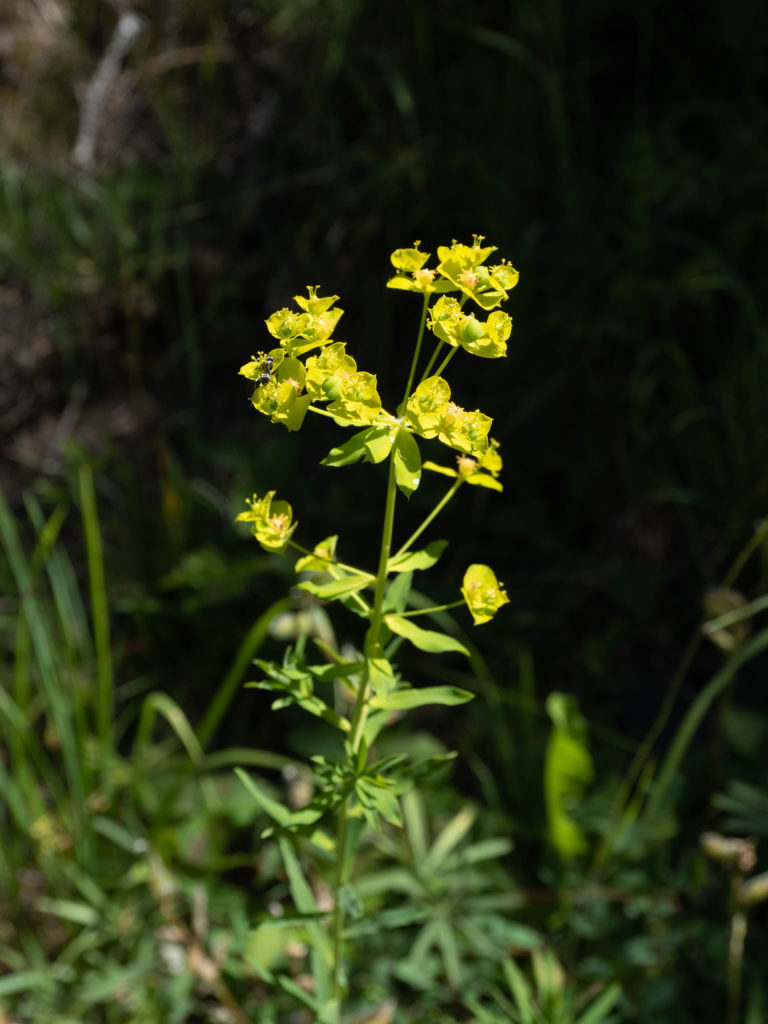BCPOA Board member Cyndi Crayton put together this weed guidance with a view to post-fire recovery, but it’s relevant to the weed challenges we all face.
Just a reminder as things begin to green up after the fire–check for undesirable sorts of green. Now is the time to start monitoring your sites for weeds. Check areas of disturbance first. The burned areas will provide a prime starting point for invasive species to populate. (Keep in mind that a common source for weed seed distribution after a fire is transfer site-to-site from logging equipment.)
The fire has provided empty niches that will be filled by the most competitive species. Natives are typically well-behaved members of the plant community; non-natives (weeds) are more competitive and greedy for existing resources. Weeds are invasive. They steal water and nutrients from native vegetation, grow quickly, reduce biodiversity, alter habitats, and contribute to lack of resources for associated animal populations.
This is a crucial time to get ahead of any weeds that are showing up on your property–they are easier to spot and to treat early.
There are five main categories for fighting and controlling weeds:
- Mechanical–tilling, mowing, chopping, digging, and burning;
- Cultural–planting placeholder or permanent species to fill in empty niches, practicing crop rotation, avoiding overgrazing, using well-adapted competitive forage species, and maintaining good soil fertility;
- Biological— using of natural enemies of weeds to attack existing plants and control spread/germination (grazing with goats or sheep, introducing or redistributing insects/pathogens);
- Chemical–applying industrial chemicals or natural/non-toxic mixtures (herbicides);
- Preventative–using certified weed free seed and hay, cleaning equipment before moving locations, screening irrigation water, and monitoring for effectiveness of all previous methods.
Invasive weeds may appear even if they did not exist on your site before the fire. Weeds routinely spread from “reservoirs” of existing weed patches to burned areas. Keep in mind that many weed seeds will last from 20 to 60 years in the soil as a seed bank for future infestations.
An integrated weed management approach–using multiple methods tailored to specific sites–will provide the best chance for success.
Biological controls (insects and pathogens) are established throughout the Canyon. These agents work best on a landscape level and are less effective on smaller sites or where the land is managed intensively.
Goats and sheep work quite well if managed and controlled continuously to prevent overgrazing or damage to desirable vegetation.
Weeds to watch for (with recommendations for control methods):
- Canada thistle (2-5, 1 not effective)
- Spotted knapweed (1-3, 5, 4 less effective)
- Common mullein (1, 2, 4, 5, 3 less effective)
- Field bindweed (1, 2, 4, 5, 3 very effective, but not currently permitted)
- Leady spurge (2, 3, 5)
- Common burdock (1, 2, 5, 3 not available)
- Toadflax (yellow or Dalmatian) (2-5, 1 burning causes significant spread)
- Poison hemlock (1-5)
- Saint Johnswort (1-5)
Weed identification websites:
http://msuinvasiveplants.org/noxioussub.html
https://www.mtweed.org/weeds/weed-id/
Definitions of plant designations:
Organic weed killers (not a recommendation of any product–information only):
https://www.arbico-organics.com/category/post-emergent-herbicides-foliar-sprays
http://www.the-organic-gardener.com/organic-weed-killer.html
Assistance
The county Weed District has cost sharing funding, equipment rentals and advice.
There’s still funding for Bridger Foothills Fire recovery: WeedCostShareBridgerFireFinal




 Twitter
Twitter Facebook
Facebook RSS
RSS Email
Email